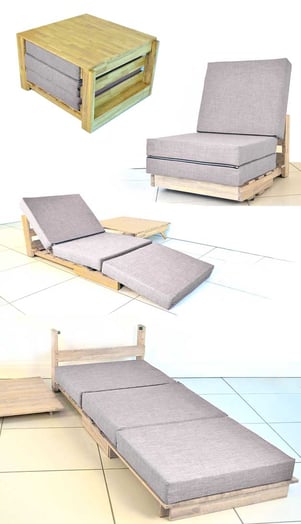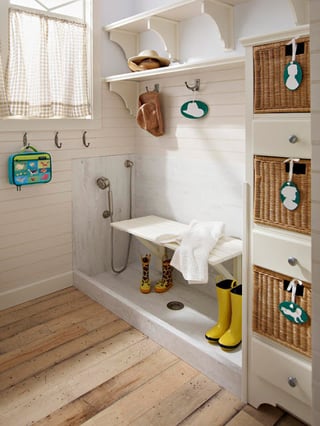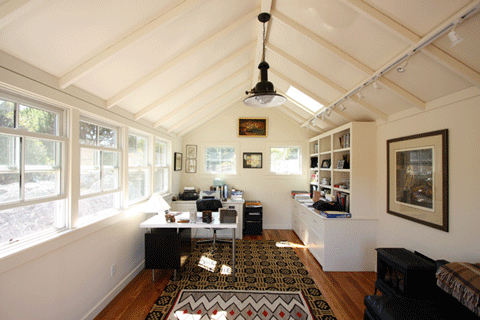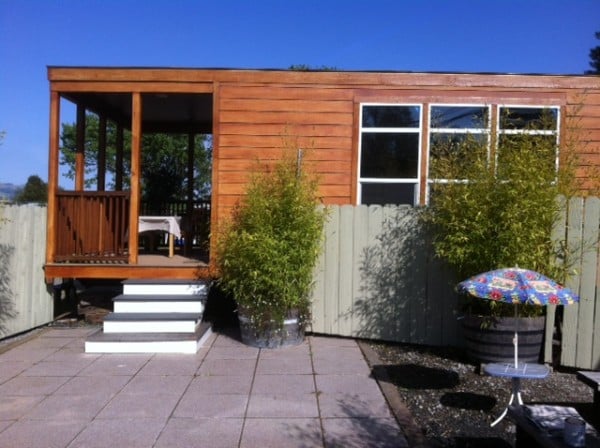A tiny house movement is on the rise in America as more and more people downsize their living spaces to save money, use fewer resources or simplify their lives. With small or tiny houses ranging from 100 to 400 square feet in area, home furnishings stores can increase sales by catering to the various price points, functionality, and size restrictions of their customers.
According to designer-builder Stephen Marshall of Little House on the Trailer in Petaluma, California, "offering new modern design to manufactured homes is an under-served niche." Addressing the needs of this growing community doesn't have to mean sacrificing quality or design, but it will require showroom designers to be more space and cost-conscious in their displays. "The path to affordability is figuring out how to merge factory design aesthetics with factory production,” said Marshall.
Smaller living spaces limit the quantity and size of furniture that one can place in their home, forcing buyers to be more selective, but creating marketing opportunities for dealers. Consequently, stores featuring displays designed specifically for small houses may attract customers who may have otherwise foregone conventional stores due to their predictable offerings.
Selling Home Furnishings to the Tiny House Market
The tiny house movement creates a plethora of marketing opportunities for dealers willing to invest the time into exploring the possibilities and thinking outside the box.
Pull out the designer rugs or invest in a few statement pieces of various sizes to serve as a room sizing chart and build mock rooms around the rugs.
Use virtual area design tools, such as those on this free room planning list. One player in the game, Urban Barn, features a virtual room planner that allows viewers to enter the dimensions of any given room and plan the logistics of furniture placement.
Consider placing Autodesk’s HomeStyler app on a public computer in your showroom and sharing it with your customers. HomeStyler allows users to make virtual models of their homes and view them three-dimensionally. The DIY segment will enjoy the capabilities while DIFM customers (do it for me) will appreciate you showing them the ropes.
Think about your furniture store as a dressing room for someone's living space. Furniture stores should feature apartment-friendly nooks and tiny home displays in their stores. When looking for a desirable piece, customers want to imagine what that piece will look like and be assured that it will fit in their confined living quarters.
Downsizing can be completely innovative and fashion forward in addition to the obvious need for functionality, so offering multi-use or transformable pieces could attract purchasers.

How about featuring this all-in-one chair, bed, lounge chair and table as featured in a tiny house furniture article by godownsize.com?
While El Niño is taking the nation by storm, this mud room can serve as an affordable and tucked away solution to the inevitable dirty mess that comes along with the rain. Showcase shelves, cabinets and hooks to increase appeal in this time of torrential downpour.

Smaller is Not Always Cheaper
Marshall focuses on accommodating families and building affordable housing solutions for them. He recently discussed a common fallacy of the tiny house movement: "The smaller you make it, the cheaper it is." He said raw, desirable land with a basic view can cost $200,000 while developing the land and buying permits may add $100,000. If those numbers are reached, Marshall believes buyers should maximize the property by building a three-bedroom, two-bath house instead of going small.
Small living or workspace is not just for those looking to save on housing expenses. High-end designers should also address the limited spacing issues that renters, owners, and workers are trending toward. This SoHo property in New York, featuring a mere 650 square feet, sold for $8 million.
Added Benefits to Going Small
Marshall believes a symbiosis occurs when landowners allow family members or individuals looking for affordable housing to live in separate units on the land. Not only would relatives be in close, separate proximity to one another, but it increases the possibility of caring for elder relatives living on the property.
Marshall has been interested in nomadic housing for as long as he can remember, going back 40 years when he lived in a geometric dome attached to his car while studying design in college.
With Millennials making up a quarter of the nation's population and outnumbering baby boomers, and as the cost of living changes, both the new members of the housing market as well as boomers and their parents continue to search for affordable housing solutions.
CrossCheck has been offering sales increasing payment solutions to the home furnishings industry for over 30 years. With multiple check in place, aka In-Home Layaway, customers can write 2-4 checks to be deposited over 30 days, allowing their finances to catch up to their purchase amount. It is not financing, there is no credit check, the customer takes the product home the same day and we guarantee the revenue for you. Download CrossCheck's free guide below to learn more.




